Any rules for placing bird houses?
Hi,
I have a new birdhouse and want to place it. It is very pretty and decorative but also good for outdoors. It can also be unscrewed to empty and clean out. I would love to have it somewhere close enough to view all the details on it, but would like some birds to use it.
I was thinking of just mounting it on a post or hanging it from a tree? I keep thinking that I don't know how birds can use it if it is out in the open like that, because cats and squirrels could get into it.
I also wonder about whether there is a certain direction to have the opening facing and what about rain and sun getting onto the house.
Thanks very much,
Adam
Comments (32)
vonyon
18 years agolast modified: 9 years agoAdam: It sounds pretty. This is a great time of year to mount a box. Birds will start to notice it and may decide to keep it in mind for their spring house hunting. I'm really glad that you have decided to educate yourself before just putting it up. Many people just nail boxes to a fence post or a tree and then the birds pay the price. My feeling is that you are taking the responsibility of offering safe and secure housing. I can tell you first hand how awful it feels to have a tree swallow sitting on a clutch of eggs and see a male house sparrow go into the box. I went out to find her eyes pecked out of her head and holes in each one of the eggs. I felt so guilty for having lured the poor bird to her death when all she wanted to do was protect her eggs.
Firstly, if you don't take measures not to, you are likely to get house sparrows or even starlings in it. As you probably know, they are non-native, aggressive competitors. They kill adults, nestlings and eggs and even build right on top of the victims. In addition, their populations really don't need any encouragement. Do you know what size the hole is? You can do a lot to avoid house sparrows or starlings by making the hole too small. This will encourage smaller native species (chickadees and titmice). I'm going to post a website below for the bird house network. That lists all the various hole sizes appropriate for a number or different species.
As for mounting the box, don't put it in a tree or on the side of a building or wooden fence post. It makes the box easy pickings for predators such as cats, racoons, snakes and anything else that decides to raid it and eat the eggs, nestlings and/or adult birds. The best and least expensive way I have found to mount a box is to put it on a piece of electric conduit. You can just hammer it in the ground and then move it if to mow (provided no one is using it). You will also need to add a baffle which can be made fairly inexpensively from stove pipe and hardware cloth. I can send you the website with directions. The baffles keep predators from climbing the mounting pole. Even if you don't think you have them, you will find out when you have an active nest. It is heartbreaking to find out the hard way.
Another thing to consider is the type and thickness of the material that makes up the box. It is important to put up houses that are made from materials that will keep the nestlings cool enough in the hot sun of summer. Thin materials tend to warp and let in rain and they are poor insulators against the heat.
Good boxes also have ventilation holes under the roof and drip holes in the bottom to drain out any wind-driven rain that might get in. The roof should overhang the sides to keep the rain out of the ventilation holes. Location is another thing; I have found that boxes with holes that face east seem to be readily accepted, but I'm not entirely sure whether it is the directional orientation, location or what it is. Different species prefer different locations and vary in the amount of spacing between boxes that they desire. Some are far more territorial than others.
So, as with any hobby, the answer to your question is complex and requires some thought and energy, but it is time well spent in the long run. I think you will find a lot of information on this website. If you decide to get into offering housing for bluebirds or tree swallows, there is a forum for Bluebirds on Garden Web and there are many people with a lot of good information there. Good luck.
Here is a link that might be useful: bird house network--Cornell
Related Professionals
Springfield Landscape Contractors · Brookfield Landscape Contractors · Canby Landscape Contractors · Cicero Landscape Contractors · Indio Landscape Contractors · Lantana Landscape Contractors · Milford Mill Landscape Contractors · New Baltimore Landscape Contractors · North Ridgeville Landscape Contractors · Old Saybrook Landscape Contractors · Seven Hills Landscape Contractors · West Haverstraw Landscape Contractors · Rehoboth Driveway Installation & Maintenance · Fallbrook Swimming Pool Builders · West Chester Swimming Pool Buildersvonyon
18 years agolast modified: 9 years agoHey Jill, I think I was writing at the same time you were posting. :o)
AdamM321
Original Author18 years agolast modified: 9 years agoHi Jill and vonyon..
This is great! I very much want to place my box correctly and feel a great responsibility for the safety of the birds.
I wanted to show you a photo of the box I have

It is a country nests box...and here is the information about it I found on their website:
>>>>>>>>>>>>>>>>>>>>>>>>..
Country Nests is a line of very unique, high quality birdhouses and feeders. As you can see, they are reminiscent of quaint country cottages. One of our special features is that our feeders look like houses. They are filled through a special opening on the top. All houses and feeders are fully functional and come apart for cleaning.
Our entire product line has been designed, developed and photographed in our own garden in the beautiful Canadian Laurentians. Production is offshore. The houses and feeders are made of pine. Exterior acrylic/ latex paint with UV protection, waterproof glue and special all-weather caulking are all used for our production. Real river stones are used on many of our models. Climate and the environment will affect their appearance over time. However, this will not hinder their use and will only add to their natural charm.
While the majority of our product line is not bird-specific, we study the exact requirements of various bird species to make sure our birdhouses are user-friendly. Details like breathing and drainage holes, bird hole openings, interior space and distance from hole to floor are researched and incorporated on each and every model.
Our birdhouses are mainly for small birds, like
-Wrens
-Chickadees
-Titmouse
-Nuthatches
-Bluebirds
-Swallows
-Downy and Hairy Woodpeckers
-FinchesAll of the above species require holes with 1" to 1 1/2" openings and a distance of from 4" to 8" from hole to floor. Basically, our smaller houses have smaller holes from 1 1/8" to 1 3/8" and the larger ones are usually 1 1/2". We vary the depth in the same manner.
All our houses and feeders are designed to be pole-mounted. Included in our stylish window box that our product is shipped in is a wooden mounting plate, screws and mounting directions. This plate is predrilled to accept 4 screws into the top of the pole and 4 screws up into the bottom of our product. As well, an optional hanging system for feeders is included.
All the houses and feeders are designed with easy cleaning access; on some models, the base comes off. On others, the entire roof is removable and still others have a special 4-screw opening on the back.
So I assume this will be fine?
So then all I have to do is figure out where to place it and how. I would like the link to the place that discusses baffles. I haven't visited the Cornell site, but I will. I find the idea of electrical conduit intriguing and will have to look into that.Thanks, I am sure I will be back with more questions after I look at this info you have offered..
:-)
Adamvonyon
18 years agolast modified: 9 years agoAdam, that is adorable. You didn't mention which hole size your house has. The North American Bluebird Association has specs to a house that they feel fits the needs of bluebirds. I have no idea if other organizations exist that do the same. You could follow Jill's advice and plan your location and everything based on the size of the hole and the type of birds that you are trying to attract. The materials sound like they would work. I'd just be concerned about ending up with house sparrows in it. Just my opinion here and I'm running the risk of upsetting a few people, but I feel it is ecologically irresponsible to encourage them to nest. If the hole is going to be on the smaller side, you should be okay to exclude them not only from nesting, but also from killing the birds you decide to attract.
As for a site, I happen to stay clear of brushy areas because I don't want to encourage house wrens to nest in the box (they destroy the eggs of other species) even though they are native. I don't mind them nesting in the area, but try to keep my bluebirds clear of them. Bluebirds like to be around cut grass as that is where they hunt. They often perch on the top of the box and hunt in the grass around the bottom. Have you ever seen bluebirds or tree swallows in your area? They love boxes, but unfortunately share the same box hole-size as the house sparrow.
Here is the site for the baffle. The key to a good baffle is to have it rock and roll on the pole. You don't want it stationary. It has to tip as it is climbed upon so that the predator is knocked off each time.
Where are you in Massachusetts? Good luck and keep me posted.
AdamM321
Original Author18 years agolast modified: 9 years agoOh, the hole size is 1 and 1/4 inches and is 6 inches from the bottom of the box. Why would you be concerned I will end up with house sparrows? I thought as long as the hole was smaller than 1 and 1/2 inches than sparrows wouldn't nest in it?
If you stay away from brush than where do you put them? Can you place them in the middle of a vegetable garden where there will be a lot of activity? You wouldn't want it in the middle of a lawn, right? Or close to a fence or trees that a cat could jump onto it. What's left? The cornell website has directions for hanging the boxes on a tree. ??
I have never seen a bluebird ever and I don't think I know what a tree swallow looks like. I am in Eastern Mass about 12 miles north of Boston. I have a lot of chickadees, titmice, cardinals, blue jays, finches, mourning doves, buntings, catbirds, some woodpeckers. I think that is about it. I don't know the difference between a wren and a house sparrow?
I looked at the baffle directions and it looks a little more difficult than I am capable of making. I wonder if they sell something that is similar?
As for the electrical conduit..I am not familiar with that either. At least what I am thinking of is like thick electrical wire, but that can't be right. Or is the conduit like an empty pipe that electrical wires go in? I suppose you get this at Home Depot? Do you get it cut to length? If it is like empty pipe...what about using copper pipe? But how do you attach the box to the top of the pipe?
I came across this birdhouse guardian tube to attach to the opening. Anyone have any experience with those?
Thanks,
Adamjillmcm
18 years agolast modified: 9 years agoSparrows will sometimes try to squeeze into a smaller hole - many "decorative" boxes are not well made and have huge holes. Yours looks like it was made by someone who cares about the well being of the birds inside as well as the looks outside (you're lucky!)
A house sparrow (or HOSP) is a non-native, introduced bird that will kill other cavity nesting species and take over their nests. It is one of the major reasons why bluebirds went into such a decline. Google house sparrow (sparrow, not house finch - the finches are native and are not cavity nesters) to get an idea of what one looks like. You will have seen them - they are the common little brown birds of dumpsters and parking lots.
If I remember your yard correctly, you would not have much luck attracting bluebirds or tree swallows, both of which like large, open areas. Good bets for you would be to try and attract chickadees, titmice or wrens to your box (you could get either house or Carolina wrens in your area). Wrens are full of personality and great fun to have in your yard, although they are not encouraged by bluebirders because they do compete with them. Not a problem for you!
There are many places that sell pole baffles (google pole baffle and you'll find a lot of options - Home Depot or a local Wild birds Unlimited type store will probably also carry them). You can use any type of pole to mount the house on; electrical conduit is sold with a threaded end, onto which you can screw a square foot that you attach to the bird house with screws. Or you can use green metal fence poles, a 4x4, whatever - but the baffle is a must, as many predators will recognize the box on a pole as a snack on a stick otherwise.
I have had luck mounting my houses on the sides of buildings and using predator excluding devices (that's what your Birhouse Guardian is) rather than baffles. A chickadee or wren can pop in and out with ease, but a raccoon or squirrel cannot reach in far enough to grab a nestling or egg. The only concern then would be a snake scaling your wall and entering the nest box, but I have not had any problems with this (my boxes are on the house itself). You can also mount them on a tree if you use a predator excluding device. Let's face it, the birds naturally nest in tree cavities, so you're actually providing them a safer option, even if it's not baffled!
It's really not as bad as it sounds - doing your research now and picking the perfect place is better than having a raccoon nosh on your nestlings and feeling responsible :) A great book to have around for reference is The Bird Garden by Stephen Kress. Link below.
Raney10
18 years agolast modified: 9 years agoHi Adam, I just wanted to tell you I love your bird house.
I have been enjoying this discussion but was curious about the comment that you may not be able to have blue birds.
I've also seen pictures of your lovely gardens and I don't understand. We have been at our new home for two years and we have had blue birds both years. I'm posting a picture of the father who as far as I'm concerned gets the "father of the year" award. He was so attentive.
Also a picture showing the tree with the bird house on it. (not the best picture of my flowers cause the finch destroyed the Heliopsis but it was a fun thing to watch) By the way, it does face southeast, guess we got it right without knowing what we were doing.
Don't give up on the bluebirds. Good luck.Raney


lisa11310
18 years agolast modified: 9 years agoPlease take the box off the tree, it is not safe there. It is pretty, but not safe. Go to www.Sialis.org to get instructions and info as to why it is NOT safe.Read the history page to see why it is so important.
Thanks,
LisaAdamM321
Original Author18 years agolast modified: 9 years agoHi...
thanks vonyon and jill for all the good information and links.
Vonyon, I was asking...where do you place your birdhouses if not near brush etc.?
Jill, I think I remember you from a previous post on natives. You were very helpful then too! [g] We installed our native shrubs last spring and are enjoying them, but can't wait for next spring when they are better established. I think I had that book out of the library once Jill...will have to take it out again. [g] I haven't gotten to the store yet to get supplies but hope to soon. Birdhouse is still sitting on the dining room table.
Thanks Raney for the photos. Lovely garden and wonderful that you get bluebirds. Well, I am going to put up the boxes and whoever I get, I will be happy with.
I hope to be back soon to post my results..
:-)
Adamvonyon
18 years agolast modified: 9 years agoAdam: I have 2 1/2 acres in a rural/suburban area. Most of the property is open space with woods in the back. I have about a 1 1/4 acre meadow in the front and a lot of lawn which I hope to turn into shrubs sooner or later. I enjoy keeping the meadow as is. It is different every year and provides lots of habitat. The thing I like about the way my property is set up is that it has a few different types of areas so each type of area attracts different kinds of wildlife.
I hope you enjoy the houses, but please don't allow house sparrows to nest in them.
aka_peggy
18 years agolast modified: 9 years agoHi Adam, great advice from others here. I'd like to add that I plug my boxes in the early spring. I don't remove the plugs until I see bluebirds (or tree swallows) hanging around. Once a HOSP is allowed to nest in a box they're particularly relentless about retaining that box year after year and they show no mercy for the more peaceful native birds.
My 2 houses are located in an open area (about 100 yds apart) with no trees in the immediate vicinity. House wrens don't nest in open areas and they too will kill the nesting BB's and tree swallows. That's why it's best not to place your box in a wooded area. One of my houses is located along a fence-line near the road by my house. The other is in the middle of a sunny perennial bed in the backyard. Tree swallows will also nest in them...and that's ok...but I do try to keep one just for bluebirds. The tree swallows are beautiful little birds and they're acrobatics are such a joy to watch.
I've had a family of BB's come and go throughout most of the summer. Over the last few weeks I've counted up to 7 BB's at a time in my backyard. They hang around the boxes and even enter them at times for short periods. I've placed a tripod type perch just a few feet from one of the boxes and they seem to like that a lot. I figure Dad can keep a closer watch on the babes if a perch is nearby.
Good luck!
jillmcm
18 years agolast modified: 9 years agoI don't think Adam is going to have much luck with BBs because I believe that her property is fairly wooded, without much open space, and BBs are not typically going to be attracted to her type of habitat. So she should place her box in a wooded area to attract chickadees or other woodland cavity nesters. She can also leave the box open for roosting in the winter if she does that. She should still be on the lookout for HOSPs, though.
AdamM321
Original Author18 years agolast modified: 9 years agovonyon...
Your property sounds lovely..I would LOVE a meadow, but I can't even fit a small meadow as I don't have enough space or sun. I am trying to grow a small wild area with clump grasses and semi wild perennials.
I did go and read more on the sites recommended and find I have now felt conflict over the sparrows. I have always felt sorry for them and didn't want to discriminate against them, but can see that it would be best. As I said, the sparrows were the ones that ended up in the bird house I put up the last time. I felt so bad after reading what they do to native birds that I took the house down. I really felt awful to do it. It was just getting cold and there were 6 sparrows all sitting on the garage roof across from the box. I couldn't tell what they were up to. I thought the box had been empty for a time at the end of the summer. 6 sparrows couldn't all live in one box right? Well, it is done. It has also warmed up again, so I hope that gives them time to find another nesting spot.
So now I have three boxes, none are placed yet. I have the decorative one, the one the sparrows used already and one wooded one that is the shape of that bluebird box in the photo above.
Haven't gotten to the store yet to get the pole/baffle.
Peggy and Jill....
Thanks for sharing what you have, Peggy. Maybe I haven't been descriptive enough about my yard. I have about a 1/4 of an acre. Small yard. I live near a highway in a suburban neighborhood where all the lots are about this size. Most neighbors yards are grass and trees with a few foundation shrubs. There are no open areas nearby. My backyard is fairly open. I have only one tree in the far northwest corner on the lot line. I do have however, two neighbors to the west of my backyard that have between them 4 large silver maples. To the south of my backyard, another neighbor with a yard almost the same shape and size as mine with only lawn and one tree in her northwest corner, [making it close to my southwest corner] and it is an even larger, older silver maple. To the north of my backyard, one neighbor with a very small backyard. No open space, only trees. A huge london plane tree, an old crapapple, and a line of 6 evergreen trees, not sure what kind..not pine..maybe spruce or fir? To the east of the backyard is our house. So picture a rectangle, 90ftx50ft and that is my back yard. I was thinking of having a box on a pole about 10-15 ft from the north side of this rectangle in the middle of a vegetable bed. That would leave the evergreen trees to the north of it by 15ft, and one maple to the west of the box about 20-25ft away and behind that maple..further west, more silver maples. Then open space besides perennials and some shrubs around the edges, for 75 ft traveling south from the box, you hit a fence and then another 75 ft of open space is my neighbors lawn, no shrubs.
I know that is probably hard to follow, I wish I had a photo, sorry. If it is hard to understand it is ok. I have the boxes, I am just going to get the pole and baffle and not sure if I will try one on the house again. I am a little leary that the sparrows will be looking there again.
I guess my question is whether to consider a box on a pole in this location, a wooded setting or not? It would seem I have an edge of the woods setting, I suppose. So should I try the pole in the middle of the vegetable garden with the hope of attracting a bluebird, or should I place the box in the shrub line under the tree canopies to attract the chicadees or other? If I place it in the shrubs, there is a post and rail fence 4ft high that runs the length of the back lot line 90ft, and it is a squirrel highway.
Thanks for helping..
:-)
Adamjillmcm
18 years agolast modified: 9 years agoChickadees like their homes to be on the edges of wooded areas where they get about 60% sun. Sounds like you'll have plenty of places to put it on a pole, and I'll bet a chickadee or wren will take you up on the offer. Wrens are fun to have around, and if you only have the one house, they won't pose a problem to other birds. I know that bluebirde house owners discourage them, and I understand why, but you won't have the problems that they do.
I understand your ambivalence about the HOSPs - no one here enjoys killing another creature. I have had to start taking active measures to control HOSPs and starlings in my yard, though, and as awful as it feels, I know it's necessary. I just regret that someone's past mistakes have made it necessary for me to kill anything. But our red-bellied woodpeckers fledged the first brood I've seen in five years, and I have to believe that my anti-starling measures were at least partly responsible.
vonyon
18 years agolast modified: 9 years agoAdam: You are lucky to have come here and have been forewarned about what can happen. I agree, you will probably never see a bluebird in your area, but there are plenty of other native birds that you can encourage. Whatever you do, I beg you not to lure any bird to your area with a box and let them be victimized by HOSPs. It is not the kind of guilt I would wish on anyone.
I can relate to you feeling bad for the HOSPs. Jill has articulated the way everyone feels. I hate the non-native issue above all else that is involved with my ever-evolving understanding of the world outside my door. I try to see the HOSP in the same way I see purple loosestrife, bittersweet, or snakehead fish. I try not to let my emotions get involved. My reasons for handling things the way I do is because I know that it is the right thing for the environment. That is the only way that I can get through it. By doing what they do, HOSPs threaten the diversity of the ecosystem. It may seem like a small thing, but it really is a huge problem in the big scheme of things. They are very adaptive, and I can assure you, they will find a way to survive with or without your birdhouse.
Some people actually hate the sparrows because of what they have seen them do, but I don't like to anthropomorphize anything. I understand that they do what they have evolved to do. Unfortunately, they are doing it in an area where the other birds have not evolved with the same tools. As Jill says, this is the ugly side of the result of human intervention. In my mind, the least we can do is not to encourage non-native plants and animals in our own little eco-communities. Good luck, it is not an easy or a popular stand to take, but I believe it is the right one.
lisa11310
18 years agolast modified: 9 years agoAdam,I'm glad you got info before you acted, sure wish more people would. I live in the woods and I do have BBs nest in my boxes, HOWEVER I am in a remote area and am lucky that there are no HOSPs, Starlings, or House Wrens out there (yet)I don't think that I could kill a bird either and I am a member of the National Blue Bird Society!There are ways to deteer those birds, but if you don't have BBs already it is probably best to not acttract them.I have a suggestion though, find someone that has a Blue Bird trail and offer to help monitor it, the help would be appreciated and you would still get the wonderful Blue Bird experiance, and be able to enjoy whatever birds you have at home. I am sure somebody over in the BB forum can help you find the nearest trial monitor.
Lisateryaki
18 years agolast modified: 9 years agoHi, I've got a related question about a box I've got. It's built to North American Bluebird Association standards back when I was a kid and kept it in the garage all these years until I just finally found it. I tacked it up on the east side of the house, second floor, where no pretators have access to it. There's a feeder on the window nearby. I've got titmice and an abundance of chickadees in the yard, but no takers for the box in the year that I've had it up!
What am I doing wrong?
jillmcm
18 years agolast modified: 9 years agoThe birds interested in cavity nesting will not nest near the activity associated with a feeder (except HOSPs, which you don't want anyway) - move one or the other and you stand a better chance of success.
ellix
18 years agolast modified: 9 years agoIs there a way to make bird houses on a tree safe from snakes and or others with out having to move them??
remy_gw
18 years agolast modified: 9 years agoHi, I have a bird house at the top of a wrought iron post that is holding up the awning to my porch. It faces east and only get about a half day of sun. I have chickadees that nest in it every year.
It was up for a long time before they started using it. I received the house for my birthday in April, so it went up then. Obviously it was vacant that year. The next year it was not used either. I thought I was not going to have any success, but of course the next year they moved in.
So a birdhouse can be vacant for quite some time before someone takes up residence. It is nice having them at the porch. We can sit out there and watch the chickadees. Last year I was finally home on the day the babies left home. They were out in my climbing roses all day!
Remyvonyon
18 years agolast modified: 9 years agoellix: Post this on the bluebirding forum. I'm sure you could probably try to finagle some sort of baffle out of sheet metal, but how would you prevent a predator from coming in from other trees from the top?
londonlener
14 years agolast modified: 9 years agoHey Adam, as I can see you've got plenty of replies from different opinions, if you're still curious to find more answers to help you with bird houses then checkout this website. Might have some interesting articles to help you out. Have a nice day.
Sue-Zone5
10 years agolast modified: 9 years agoHi Adam, I wondered how you ever made out? Do you have any updates or photos to share? I thought this thread was very interesting. I'm new here but I found out very quickly that this is the place for answers! :)
wes10
9 years agolast modified: 9 years agoWhat is the likelihood of getting a bird to nest in a house that is in a lovely garden and it is situated about 4 feet taller than the highest plant in full sun?
I also live in the middle of a forest, I have set up several bird houses and get no residents. I think they prefer their natural setting.
Jessie Harrison
7 years agoAh, I'm so jealous I absolutely love bird houses. If you got the birdhouse to attract birds to you home I'd suggest putting it around your porch area. I actually am trying to find myself a bird house. Pretty soon I'll be in the same situation, but I think I'm putting mine in my tree in the front yard. http://www.rosiesenterprise.com/default.asp?dept_id=30060
rhizo_1 (North AL) zone 7
7 years agoEeeek, Jessie....some of those bird houses are scary awful, lol.
sharpgirl58
6 years agoI have a new blue bird house and having a hard time where to place it, can I place it by my house/porch and how far from other bird houses should it be and how far from other bird feeders
mr1010
6 years agosharpgirl, I can only share my experience w/ BB. For several years I put up houses
built (I thought) to BB specs. No takers. And because I had seen BB on my farm I
knew they were around, but I didn't know where they were nesting. Until one day
I noticed that the 'fake' hollow owl I had attached to the roof peak of my small barn, had BB's coming and going around it. BB's had pecked a hole in the chest of owl and apparently
built a nest inside. This is now the 2nd year that they're nesting there.
Their nest is about 15-18 ft. off ground, 100 ft. from a feeder but hidden by a bldg.,
hole faces South, slightly southeast. BB's perch on barn roof before they enter
the hole. Both male and female feed the babies. Area of nest is surrounded by
either mowed pasture or lawn. No close trees for 50-60 ft. I overflow a large
watering trough (for horse) several times a day and the BB's show up to bathe
and frolic in the water, if it's warm outside.
So my bluebirds outsmarted me and made their own personalized nest and they
must like it cause they've returned this year.
Good Luck with attracting your own BB's.
PS/I'm in zone 9B Central Fl.
Steve Earsom
2 years agoIt’s still important to use baffles or predator guards around the birdhouse. I find it useful to place the birdhouse somewhere predators can’t easily reach it. I place it high from the ground but impossible for climbing predators to reach.
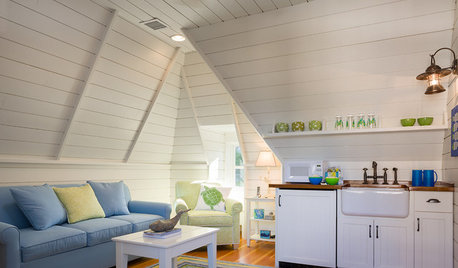
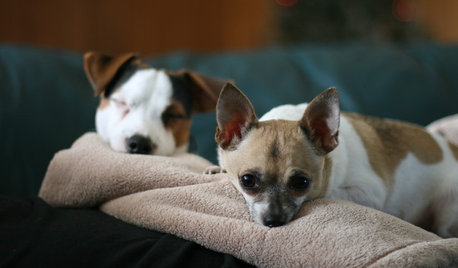
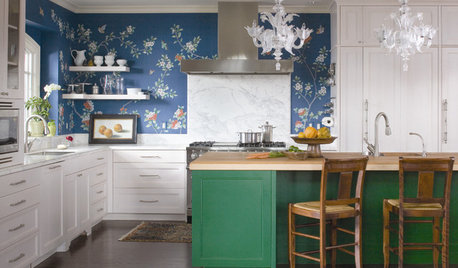
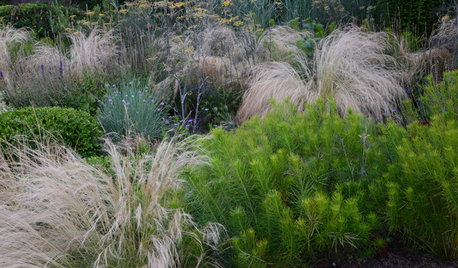

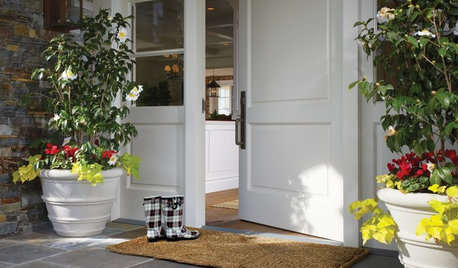
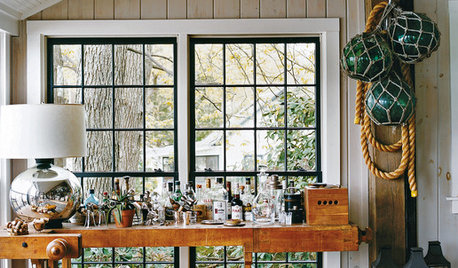
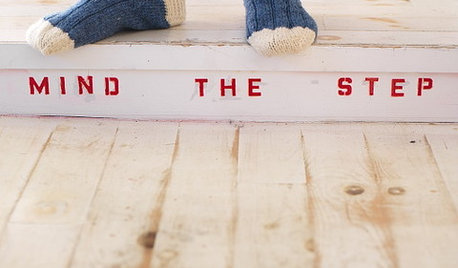
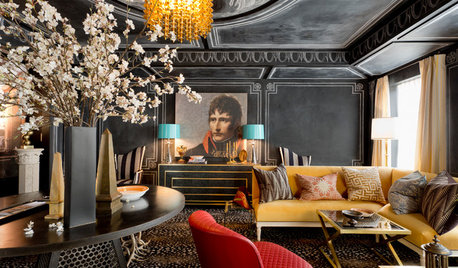
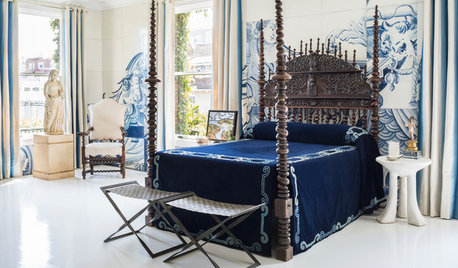






jillmcm